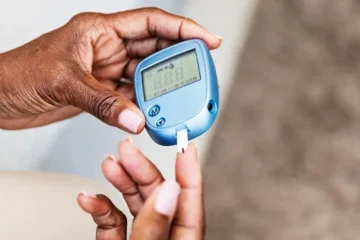For individuals living with diabetes, monitoring blood glucose levels is a crucial part of managing their condition and preventing complications. With a wide range of glucose monitors available on the market, choosing the right one can be overwhelming. In this comprehensive guide, we will discuss the factors to consider when choosing a glucose monitor to ensure effective diabetes management.
Understanding Glucose Monitors
Glucose monitors, also known as glucometers, are devices used to measure blood glucose levels. These devices are essential for individuals with diabetes to monitor their blood sugar levels regularly. Glucose monitors work by analyzing a small sample of blood, typically obtained by pricking the fingertip with a lancet.
Types of Glucose Monitors:
- Traditional Glucose Monitors: Traditional glucose monitors require the user to prick their fingertip to obtain a blood sample, which is then applied to a test strip inserted into the monitor. The monitor then displays the user’s blood glucose level.
- Continuous Glucose Monitors (CGM): CGM systems consist of a small sensor inserted under the skin, typically on the abdomen or upper arm, that continuously measures glucose levels in the interstitial fluid. The sensor is connected to a transmitter that wirelessly sends glucose readings to a receiver or smartphone app.
Factors to Consider When Choosing a Glucose Monitor
When choosing a glucose monitor, it’s essential to consider the following factors to ensure effective diabetes management:
1. Accuracy and Reliability:
Accuracy is perhaps the most critical factor to consider when choosing a glucose monitor. Look for a monitor that provides accurate and reliable blood glucose readings, as this is essential for making informed decisions about diabetes management. Check the monitor’s accuracy by comparing its readings to those obtained from laboratory tests.
2. Ease of Use:
Choose a glucose monitor that is easy to use and requires minimal steps to obtain a blood glucose reading. Consider factors such as the size and readability of the display, the simplicity of the user interface, and the ease of applying blood to the test strip.
3. Sample Size and Test Time:
Consider the sample size required for the glucose monitor and the time it takes to obtain a blood glucose reading. Some monitors require a smaller blood sample and provide faster results, which can be beneficial for individuals with dexterity issues or busy lifestyles.
4. Data Storage and Connectivity:
Look for a glucose monitor that offers data storage and connectivity features. Many modern glucose monitors can store a history of blood glucose readings, allowing users to track their levels over time. Some monitors also offer connectivity options, such as Bluetooth or USB, for transferring data to a smartphone or computer.
5. Cost and Insurance Coverage:
Consider the cost of the glucose monitor and whether it is covered by your health insurance plan. Some insurance plans cover the cost of glucose monitors and test strips, while others may require you to pay out of pocket. Compare the cost of different glucose monitors and consider the long-term cost of test strips when making your decision.
6. Size and Portability:
Choose a glucose monitor that is compact, lightweight, and portable, especially if you plan to carry it with you wherever you go. Consider factors such as the size of the monitor, the availability of carrying cases or pouches, and the ease of transporting it when traveling.
7. Additional Features and Functions:
Consider any additional features and functions offered by the glucose monitor. Some monitors offer features such as backlit displays, audible alerts, alternative site testing, and hypo/hyperglycemia alarms. Determine which features are most important to you and your diabetes management routine.
Types of Glucose Monitors
When choosing a glucose monitor, you will need to decide between a traditional glucose monitor and a continuous glucose monitor (CGM). Each type has its own benefits and considerations:
1. Traditional Glucose Monitors:
- Pros: Traditional glucose monitors are typically more affordable and widely available. They are easy to use and provide accurate blood glucose readings.
- Cons: Traditional glucose monitors require regular fingerstick testing, which can be inconvenient and painful for some users. They do not provide continuous glucose readings.
2. Continuous Glucose Monitors (CGM):
- Pros: CGM systems provide continuous glucose readings, allowing users to monitor their blood sugar levels throughout the day and night. They offer trend data, alerts for high and low glucose levels, and insights into glucose patterns.
- Cons: CGM systems can be more expensive than traditional glucose monitors, and they require regular sensor changes. Some users may find wearing a sensor on their body to be uncomfortable or inconvenient.
Conclusion
Choosing the right glucose monitor is essential for effective diabetes management. By considering factors such as accuracy, ease of use, sample size and test time, data storage and connectivity, cost and insurance coverage, size and portability, and additional features and functions, you can select a monitor that meets your needs and fits your lifestyle. Whether you opt for a traditional glucose monitor or a continuous glucose monitor (CGM), the most important thing is to find a monitor that you are comfortable using and that provides accurate and reliable blood glucose readings. With the right glucose monitor, you can effectively manage your diabetes and take control of your health.


